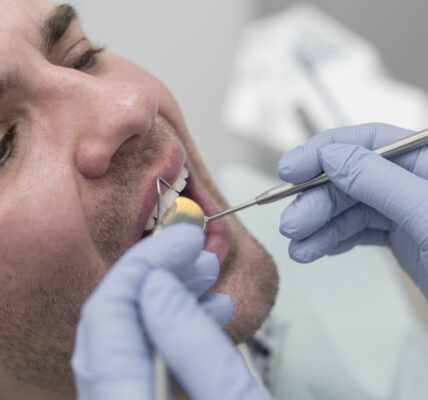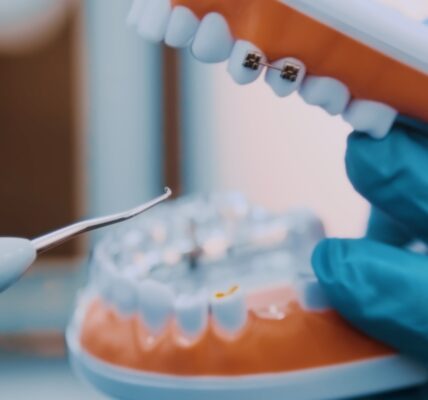When it comes to achieving a straighter smile, there are several orthodontic options available, but two of the most popular are traditional braces and Invisalign. Both treatments are designed to straighten teeth, but they come with distinct differences in terms of appearance, comfort, treatment time, and maintenance. If you’re considering orthodontic treatment in The Colony, understanding the pros and cons of both options can help you make the best choice for your smile. Here’s a guide to Invisalign and braces, and what Castle Hills Dentistry, your trusted The Colony dentist, recommends for your orthodontic needs.
Traditional Braces: A Time-Tested Option
Traditional braces have been the go-to treatment for straightening teeth for decades. They consist of metal brackets attached to the teeth, connected by a thin wire that is adjusted periodically by your dentist or orthodontist to gradually shift the teeth into proper alignment. For patients with more complex dental issues, braces are often the most effective option.
Pros of Braces:
- Proven Effectiveness: Traditional braces are highly effective at correcting a wide variety of dental issues, including severe crowding, bite misalignment, and teeth that are significantly out of place. They can also address issues like jaw alignment problems and are particularly useful for teens and adults with complex orthodontic needs.
- No Compliance Issues: Unlike Invisalign, which requires patients to wear their aligners for 20-22 hours per day, braces work continuously to move teeth into place. There’s no need to worry about forgetting to wear them, making them a great option for patients who might struggle with the discipline needed for clear aligners.
- Durable and Reliable: Braces are incredibly durable and not prone to breaking or losing aligners. Once they’re in place, they work steadily and effectively without requiring much extra attention beyond regular adjustments and dental checkups.
Cons of Braces:
- Appearance: One of the biggest concerns for patients, especially adults, is the aesthetic impact of traditional braces. Brackets and wires can be noticeable, and some people feel self-conscious about their appearance during treatment.
- Comfort: Braces can be uncomfortable, particularly after adjustments. The wires can irritate the inside of the mouth, leading to sores or discomfort. Additionally, food can get stuck between the brackets and wires, requiring more frequent cleaning.
- Oral Hygiene Challenges: Cleaning around braces can be challenging, as food and plaque can accumulate in the brackets. Proper oral hygiene routines are essential to prevent issues like cavities and gum disease. Special tools like interdental brushes and floss threaders may be necessary to clean effectively.
Invisalign: A Modern Alternative
Invisalign has become a popular choice in recent years due to its clear, discreet appearance and convenience. Instead of metal brackets and wires, Invisalign uses a series of clear, custom-made aligners that fit snugly over your teeth. These aligners are virtually invisible and can be removed for eating, drinking, brushing, and flossing, making them an appealing option for many patients.
Pros of Invisalign:
- Aesthetic Appeal: One of the biggest advantages of Invisalign is that the aligners are nearly invisible. This is especially important for adults or teens who may feel self-conscious about wearing traditional metal braces. Invisalign allows patients to straighten their teeth without drawing attention to their orthodontic treatment.
- Comfort: Invisalign aligners are made from smooth plastic, which means there are no brackets or wires that can irritate the inside of the mouth. Many patients find Invisalign to be more comfortable than traditional braces.
- Removable Aligners: Unlike braces, which are fixed in place for the duration of treatment, Invisalign aligners can be removed whenever necessary. This gives patients the freedom to eat, drink, brush, and floss without any restrictions. The ability to remove the aligners also makes oral hygiene easier and more effective.
- Fewer Dental Visits: While you’ll still need to check in with your dentist periodically to ensure your treatment is progressing, Invisalign often requires fewer in-office visits than traditional braces. This is because the aligners are custom-made in advance, and you can change to the next set of aligners on your own at home.
- No Food Restrictions: With Invisalign, you can remove the aligners while eating, so there are no food restrictions like with braces. This means you can enjoy your favorite foods without worrying about damaging your braces or getting food stuck in them.
Cons of Invisalign:
- Discipline Required: While Invisalign aligners are removable, this means that patients must remember to wear them for 20-22 hours per day. If aligners are not worn as prescribed, the treatment may take longer or not be as effective. This level of commitment can be challenging for younger patients or those with busy schedules.
- Not Suitable for All Cases: Invisalign is effective for many types of dental alignment issues, but it may not be the best option for severe cases or complex bite problems. In some instances, traditional braces may be necessary to achieve the desired results.
- Potential for Misplacement: Since Invisalign aligners are removable, there’s a risk of losing or misplacing them. Patients must be diligent about keeping track of their aligners and cleaning them properly to avoid damage.
What Castle Hills Dentistry Recommends
At Castle Hills Dentistry in The Colony, we take a personalized approach to every patient’s orthodontic needs. While both Invisalign and traditional braces have their advantages, the right option for you will depend on your unique situation, goals, and preferences.
For Simple to Moderate Cases: Invisalign is an excellent choice for patients who want a discreet, comfortable, and flexible option. It works well for mild to moderate issues such as spacing, crowding, or minor bite misalignments. If you’re an adult or teen looking for an aesthetically pleasing treatment option and have the discipline to wear your aligners as instructed, Invisalign could be the perfect solution.
For Complex Cases: If you have more complex dental issues, such as severe overcrowding, bite problems, or significant tooth misalignment, traditional braces may be more effective. Braces are versatile and can address a wide range of orthodontic problems, even those that may not be treatable with Invisalign.
Making the Right Choice
Choosing between Invisalign and traditional braces is a big decision, but you don’t have to make it alone. At Castle Hills Dentistry, we’ll work with you to evaluate your dental health, treatment goals, and lifestyle preferences to determine the best orthodontic treatment plan for you. Both Invisalign and traditional braces are highly effective at straightening teeth and improving the appearance of your smile.
We offer a free consultation to discuss your options and help you make an informed decision. No matter which treatment option you choose, we’re here to support you every step of the way in achieving the straighter, more confident smile you’ve always wanted.
Conclusion
Whether you choose Invisalign or traditional braces, the team at Castle Hills Dentistry in The Colony is committed to helping you achieve a beautiful, healthy smile. By providing expert guidance, advanced technology, and personalized care, we ensure that you get the best orthodontic treatment for your needs. Schedule your consultation today to take the first step toward your new smile!





